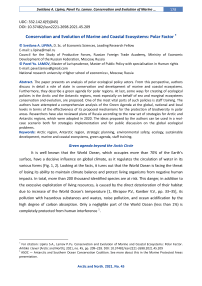Conservation and Evolution of Marine and Coastal Ecosystems: Polar Factor
Автор: Lipina S.A., Lamov P.Yu.
Журнал: Arctic and North @arctic-and-north
Рубрика: Reviews and reports
Статья в выпуске: 45, 2021 года.
Бесплатный доступ
The paper presents an analysis of polar ecological policy actors. From this perspective, authors discuss in detail a role of state in conservation and development of marine and coastal ecosystems. Furthermore, they describe a green agenda for polar regions. At last, some ways for creating of ecological policies in the Arctic and the Antarctic regions, most especially on behalf of sea and marginal ecosystems conservation and evolution, are proposed. One of the most vital parts of such policies is staff training. The authors have attempted a comprehensive analysis of the Green Agenda at the global, national and local levels in terms of the effectiveness of its proposed mechanisms for the protection of biodiversity in polar areas. Researchers have also reviewed plans of Russia according to the new set of strategies for Arctic and Antarctic regions, which were adopted in 2020. The ideas proposed by the authors can be used in a real-case scenario both for strategies implementation and for public discussion on the global ecological problems.
Arctic region, Antarctic region, strategic planning, environmental safety, ecology, sustainable development, marine and coastal ecosystems, green agenda, staff training
Короткий адрес: https://sciup.org/148323182
IDR: 148323182 | УДК: 332.142.6(9)(045) | DOI: 10.37482/issn2221-2698.2021.45.209
Текст научной статьи Conservation and Evolution of Marine and Coastal Ecosystems: Polar Factor
Green agenda beyond the Arctic Circle
It is well known that the World Ocean, which occupies more than 70% of the Earth's surface, have a decisive influence on global climate, as it regulates the circulation of water in its various forms (Fig. 1, 2). Looking at the facts, it turns out that the World Ocean is facing the threat of losing its ability to maintain climate balance and protect living organisms from negative human impacts. In total, more than 200 thousand identified species are at risk. This danger, in addition to the excessive exploitation of living resources, is caused by the direct deterioration of their habitat due to increase of the World Ocean’s temperature [1, Khrapov P.V., Kaniber V.V., pp. 33–35], its pollution with hazardous substances and wastes, noise pollution, and ocean acidification by the high degree of carbon absorption. Only a negligible part of the World Ocean (less than 1%) is completely protected from human interference 1.
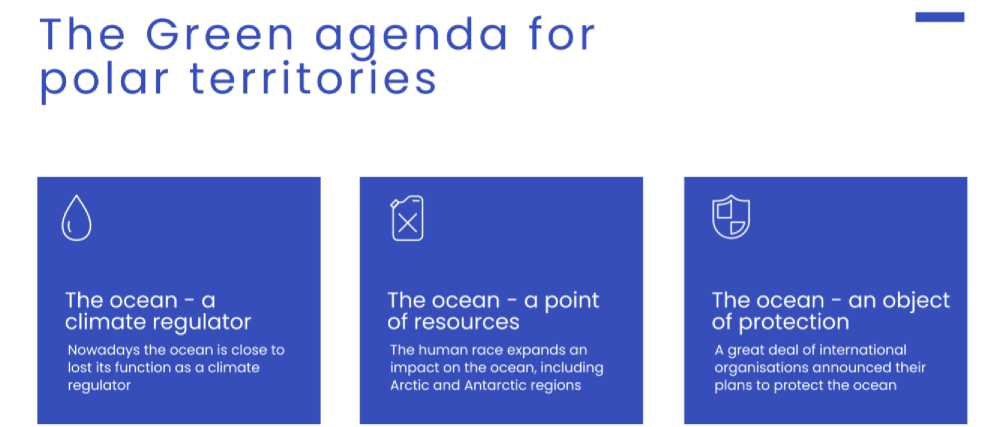
Fig. 1. The role of the World Ocean in human life.
The escalation of this situation and the inaction by humans can have disappointing consequences. The United Nations (hereafter, the UN) and the United Nations Environment Programme (hereafter, UNEP) have estimated that, by 2050, the proportion of plastic in the oceans will exceed the weight of all its fish resources 2, the acidity may increase by 150% 3, by 2100, up to
70% of corals, which are the most important ecosystems for many commercial fish species, may be destroyed 4, and the increase in the level of the World Ocean is predicted in the range from 62 to 238 centimeters 5.
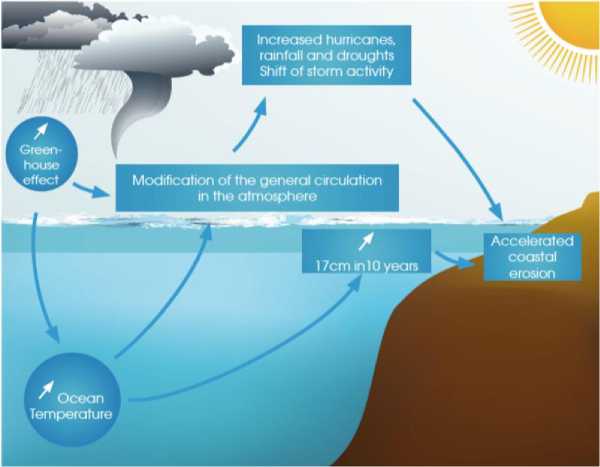
Fig. 2. The role of the World Ocean in climate regulation 6.
Thus, the deformation of the World Ocean ecosystems, including the Arctic and Antarctic sector, is evident [2, Kennicutt M., Bromwich D., Liggett D. et al., pp. 98–100] (Fig. 3). The green agenda is not just a tribute to fashion, but a way to slow down and overcome the negative consequences of anthropogenic impact in these areas of the planet.
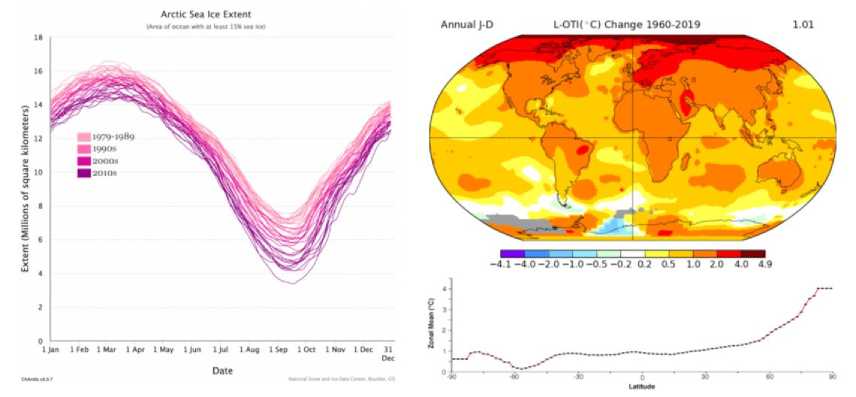
Fig. 3. Dynamics of average temperatures and ice distribution in the Arctic region during the year 7.
Environmental policy beyond the Arctic Circle
A person, on the one hand, is a consumer in relations with the oceans, since, for example, the demand for seafood over the past 70 years, according to the UN Food and Agriculture Organization, has shown growth almost all the time, and in 2018, industrial fishing indicators reached the highest value in history — 96.4 million tons 8. Humanity is no less active in the exploration, development and production of hydrocarbons (oil and gas) in the World Ocean, the total volume of its reserves is estimated at 264 billion tons in oil equivalent. Despite a slowdown in drilling activity on average worldwide over the past 6–7 years, interest in offshore production remains high, including interest in hydrocarbon reserves in the Arctic sector 9. At the same time, no one on the planet, except for humans, is able, if not to stop the growth of anthropogenic pressure on the World Ocean, then at least to slow down its positive dynamics and mitigate possible negative consequences. Let us try to show how humans have been able to organize themselves for such work at three levels of action: global, national and personal (Fig. 4).
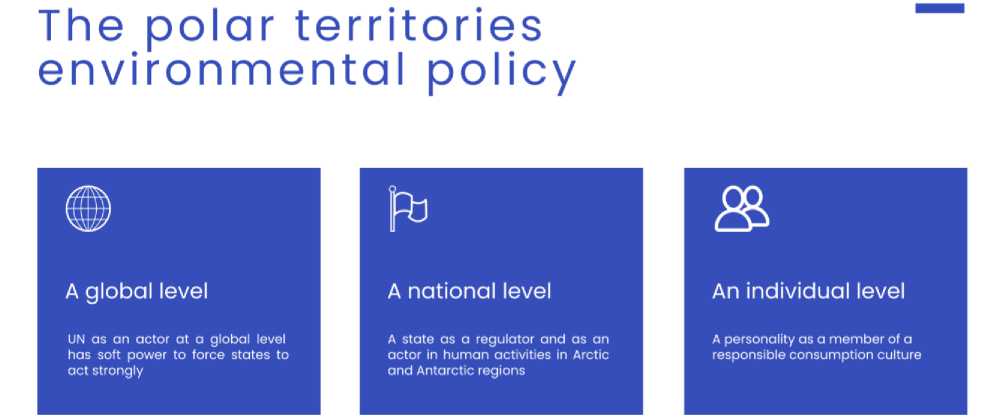
Fig. 4. Levels of organization of work on the World Ocean ecosystem conservation.
The UN is one of the main and system-forming actors at the global (supranational) level
(Fig. 5). This organization is tasked not only with promoting the green agenda, but also with “soft- pressuring” its member states to take active joint action. This is a very important area of work, because, firstly, not all countries have direct access to the polar territories due to existing international agreements and regimes of national borders and territorial seas [3, Zukhba D.T., pp. 72–73]; secondly, the scientifically accessible territory of the Southern Arctic does not promise obvious and quick economic benefits as the space of the world ocean, far from attractive logistics chains, and, finally, the state as an actor in environmental policy acts in several forms at once.
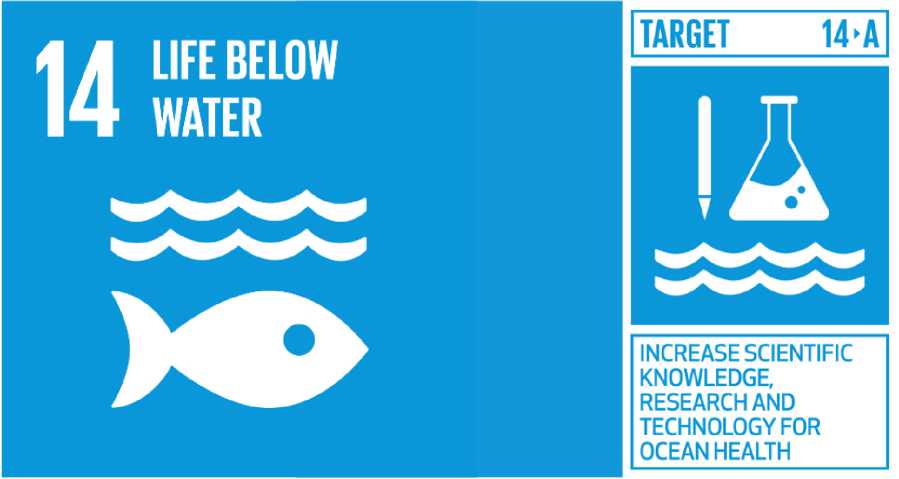
TARGET 14 A
INCREASE SCIENTIFIC KNOWLEDGE, RESEARCH AND TECHNOLOGY FOR OCEAN HEALTH
M LIFE BELOW WATER
Fig. 5. One of the UN Sustainable Development Targets 2030 10.
The first role of the state is limited to the function of a regulator, which impartially (it should at least act in this vein) establishes the rules of conducting economic activity on its territory
10 URL: (accessed 06 July 2021).
for the participants [4, Lipina S.A., Smirnova O.O., Kudryashova E.V. et al., pp. 199–207]. At the same time, the state indirectly acts as an active participant in this turnover through companies with state capital. Obviously, in this case, the interests of the economic entity come to the fore. The third role of the state is reduced to the formation of law enforcement practice in situations of environmental damage. Thus, the proclamation of green agenda initiatives at the national or global level does not always mean their active promotion, since such promotion largely depends on the will of a particular government. At the same time, the state also has a unique opportunity to influence the content of the green agenda at the global level in relation to the protection of marine and coastal areas beyond the Arctic Circle.
The average participant of the turnover lacks this perspective. Only a very few transnational corporations with specific economic interests in these territories have the opportunity to advance them through lobbying and other tools. Thus, the Arctic and Antarctic are more likely to be the objects of close attention of “interest clubs” than ecosystems, the state of which is closely monitored by billions of people, as is the case, for example, with air quality. The presence of speculative lines of the polar circles seems to throw a veil of mystery over these regions. Instead of ensuring the preservation and careful study of this special natural environment, people are often removed from this topic, or it is given secondary importance.
At the individual level, the situation is exacerbated by the fact that only a few study these regions professionally, thousands are involved in the work of international governmental and nongovernmental organizations, and billions are concentrated on solving other problems. On the one hand, this is par for the course, given the division of labour. On the other hand, the energy of billions could be of great help in promoting the global initiatives of the UN at the national, regional and local levels. It is not a question of urgent need to become environmentalists or volunteers. It is much more important to create a culture of perception of the world, which, as an imperative, would contain the concept of the planet (including marine and coastal ecosystems) as a common home for every person who is fully responsible for the present and future of this home. Such a culture could contribute to the gradual adjustment of people's everyday behavior, the formation of eco-habits, which in turn could gradually reduce the anthropogenic load on the ecosystems of the Arctic in both hemispheres.
Thus, the actors of the environmental policy concerning the territories of the Polar Regions currently have different degrees of involvement in the implementation of this policy [5, Balobanov A.E., p. 9]. It seems that the depth of immersion in projects depends on the quality of the ecological culture of local communities, on the national conditions for environmental work, determined by the government, and on the degree of environmental threats to human life and health.
Rules of the game beyond the Arctic Circle: international consensus
Despite the varying degree of involvement of environmental policy actors in Arctic and Antarctic issues, they all work in these areas in accordance with universal international rules (Fig. 6).
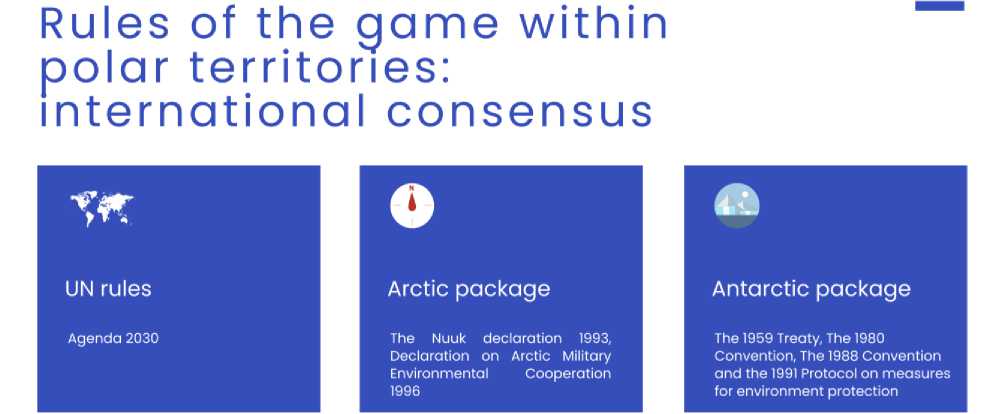
Fig. 6. Universal international rules for work in the Arctic and Antarctic.
The most status rules in terms of their centralization include the UN Sustainable Development Goals up to 2030 [6, Degai T.S., Petrov A.N., pp. 519–521], which, according to the developers, can be achieved through the solution of seven tasks, including (1) prevention and significant reduction of marine pollution; (2) sustainable use of coastal ecosystems by 2020; (3) minimization and elimination of the consequences of ocean acidification through the development of scientific cooperation; (4) effective management of fisheries, taking into account the capabilities of ecosystems, by 2020; (5) implementation of conservation measures for at least 10% of coastal ecosystems by 2020; (6) regulation of subsidies for fisheries by 2020; (7) increasing access to technology and scientific knowledge for the sustainable management of marine ecosystems, including by small island states. As can be seen, the stated objectives are quite ambitious and cover a wide range of issues of human activity in the ocean. Many of the presented tasks were planned to be solved by 2020. The actual state of affairs is recorded in the 2020 Sustainable Development Goals Report, which was prepared by the UN Department of Economic and Social Affairs based on the national reports of the member countries of the organization.
What does the analysis of last year’s report reveal about the conservation of marine ecosystems? 11 The level of ocean acidification in 2019 was declining relative to 2016. Since 2010, the surface area of the World Ocean protected by environmental legislation has more than doubled (the 200-mile coastal zone). In 2020, the number of countries participating in the
Agreement on Combating Illegal Fishing has expanded from 58 to 66, including participation of European countries. There has also been an increase in the number of countries that have developed and adopted national measures to combat illegal fishing on the basis of the Agreement. At the same time, the report notes that it is necessary to continue active work in this direction. The problem of small seafood companies remains unresolved, which, on the one hand, cause the greatest harm to marine ecosystems, as they violate the rules for the rational use of marine resources, and on the other hand, play a crucial role in supplying local communities with food. Experts are also concerned about indicators of a slow decline in biodiversity, particularly in the Black Sea and the Mediterranean.
Thus, the UN has seen a positive trend in some marine conservation issues and a continued threat to others. The Decade of Action (as the UN calls the period from 2020 to 2030) should be a turning point for all work [7, Claudet J., Bopp L., Cheung W. et al., p. 36–37]. At the same time, it is clear that the UN program in the field of conservation of marine ecosystems is not provided with an enforcement mechanism in case any of the Member States evades active participation and cooperation. It seems that this agenda is rather an image tool for national governments to promote their own interests in the international arena or on the eve of elections in one of the countries 12.
International rules for working in the Arctic and Antarctic are different due to the status of these regions. To begin with, let us take a closer look at the international documents that define the mechanisms for the conservation of marine ecosystems in the Arctic region. As it’s known, the Arctic is a state territory, the sovereignty of which was divided by Russia, the USA, Canada, Denmark and Norway [8, Koltakova A., Pankova V., p. 30]. Thus, any environmental initiatives are under the close attention of the listed national governments, which does not exclude interaction and cooperation (Fig. 7).
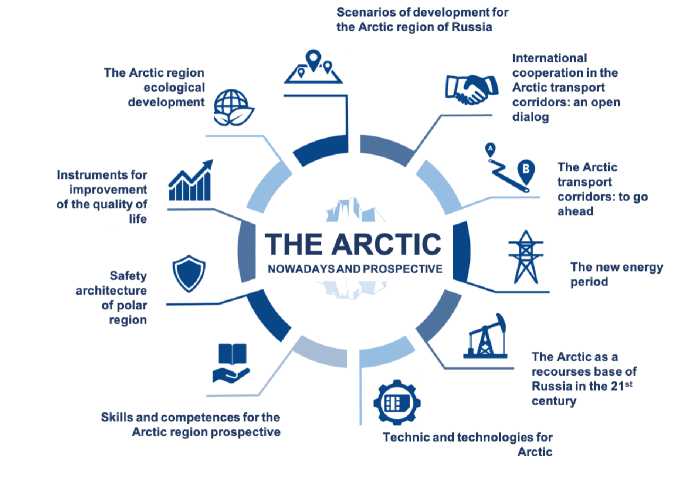
Fig. 7. Directions for the implementation of projects in the Arctic region 13.
At the supranational level, the Arctic Council operates, the decisions of which largely determine the possibilities for the conservation of marine and coastal ecosystems. This refers to the 1993 Nuuk Declaration on Environment and Development in the Arctic and the 1996 Programme for Military and Environmental Co-operation in the Arctic (hereinafter the Arctic Package). The Arctic package of documents is a special mechanism for international cooperation for the conservation of marine ecosystems in the region. The Nuuk Declaration is entirely aimed at solving the environmental problems of the Arctic, contains specific and tangible proposals for cooperation in this area, but does not offer any mechanisms for forcing the participating country to comply with the provisions of the declaration or to intensify its work. The concept of “responsibility”, for example, appears twice in the document in the context of its awareness at the level of ministers who signed this declaration. The concept of “consequences” occurs more often (10 times), but only in relation to the description of the negative consequences for nature from human activities in the region. Finally, the term “mechanism” is used twice by the developers to describe the joint work of countries in case of emergencies. Thus, despite the completeness of the document in terms of a set of measures to preserve the marine ecosystems of the Arctic, the declaration is completely “toothless” in front of possible violators. Neither financial sanctions (which are often the most sensitive), nor sanctions of a different nature, nor special environmental arbitrations are provided for in this regulatory instrument. This approach seems to allow for the behaviour of any of the participants, which may deviate from the norm. As long as ecological behavior and rational use of resources has not become the simplest element of culture, it is impossible to start effectively protecting nature without intimidating potential violators with harsh measures of responsibility.
13 URL: (accessed 06 July 2021).
The 1996 Programme of Co-operation in the Military Field with Norway is an example of an instrument of a different order. This is a bilateral agreement aimed at solving a specific range of tasks in the field of nuclear waste management, including in the Arctic region 14. Without going into details of the document, it is “capital-intensive” and (probably therefore) sufficiently definite as to the financial liability of the parties in case of damage caused to the other party or third parties. Moreover, in order to resolve disputes arising in connection with attempts to prove the amount of damage, the parties agreed to appoint an arbitrator in accordance with the arbitration rules of the UN Commission on International Trade Law.
Thus, the agreement with Norway, in terms of its structure and content, is very close to an ordinary civil contract between individuals, which includes a materially measurable subject, the rights and obligations of the parties to such an agreement, measures of liability for violation of its terms, as well as a dispute resolution procedure which, as we have seen, is absent in international instruments with multiple parties. Such an agreement offers the parties a real choice of behavior, on which the fate of each of the parties directly depends. It seems that such an approach is more effective, since (no matter how cynical it may sound) it “packs” all national interests into a simple formula for calculating and compensating for the damage caused.
The Antarctic region has a different history and international legal status. When Argentina and Chile began claiming the territory, the international community insisted on signing the Antarctic Treaty of 1959. This treaty gave the territory the status of a demilitarised international zone free for scientific research. The Treaty was later supplemented by the 1980 Convention on the Conservation of Antarctic Living Marine Resources, the 1988 Convention on the Regulation of the Development of Mineral Resources in the Antarctic and the 1991 Protocol to the 1959 Treaty on Environmental Protection (hereinafter referred to as the Antarctic Package). The main international platform dedicated to the protection of Antarctic ecosystems is the Commission for the Conservation of Antarctic Marine Living Resources (CCAMLR). One of the main areas of work of this commission is to promote the idea of expanding the territories of marine protected areas in the South Sea. During 2014–2019, Australia, Chile, Argentina and the European Union have repeatedly made proposals for the creation of new protected areas, which increases the chances of preserving Antarctic ecosystems. Russia, along with 25 other countries (including the countries of the European Union), is a member of the commission and participates in the work of its bodies [9, Chown S.L., Brooks C.M., Terauds A. et al., pp. 4–5].
As for the Antarctic package itself, for example, the Antarctic Treaty of 1959 does not offer its participants any enforcement mechanism [10, Timokhin K.V., p. 107]. In turn, the 1991 Protocol (on environmental protection) contains a direct reference to the creation of a special Arbitration Tribunal to resolve disputes between the contracting parties. The status of arbitration is regulated by a special annex to the protocol 15. In this way, an understandable mechanism for dispute resolution is offered to the parties to the 1959 Treaty, which seems to be an effective incentive for preventing violations in the area of ecosystem protection in the region.
In this case, it seems likely that states accept the possibility of establishing a special enforcement mechanism to resolve a dispute in a situation where such a dispute is not related to state activities on their territory, i.e. within the framework of their national sovereignty. The question of sovereignty as a kind of dividing line in this material was not raised by chance. It seems that humanity is going through a period of rejection of the principles of globalization in the context of an easy parting (delegation) with a part of sovereignty in favour of supranational organizations. At the same time, the world economy is moving towards a gradual monopolization and consolidation of sources of capital, which often begin to replace national governments. In order to survive in such a situation, in order to be stronger than business, states “twist” the rules of the game at their own level and abandon global alliances at the international level.
Rules of the game beyond the Arctic Circle: national plans or corporate interests?
Regulation of marine ecosystems conservation issues at the international level is the result of a compromise between individual countries or groups of countries. In the case of national regulation, the parties to the social contract are different. On the one hand, the national government participates in it, and on the other, there is a society. Each of them acts on the basis of international and national rules and their own interests. In reality, the parties to such an agreement are divided rather conditionally; society, like the government, is heterogeneous in its composition (Fig. 8).

isolated work on the Antarctic strategy a wide range of aspects of work
easy access to the Arctic strategy for all stakeholders simultaneous adoption of two strategies at Presidental and Governmental levels
Fig. 8. Features of Russia’s national plans for work in the Arctic and Antarctic.
Russia has adopted two strategies for working in the Arctic and the Antarctic region in 2020. The documents have partly different status in terms of their level of approval, but in general they represent an example of a strategic view of the country's role in these areas. In fact, the documents represent some of the most sensitive issues for Russia's engagement in the Arctic and
Antarctic.
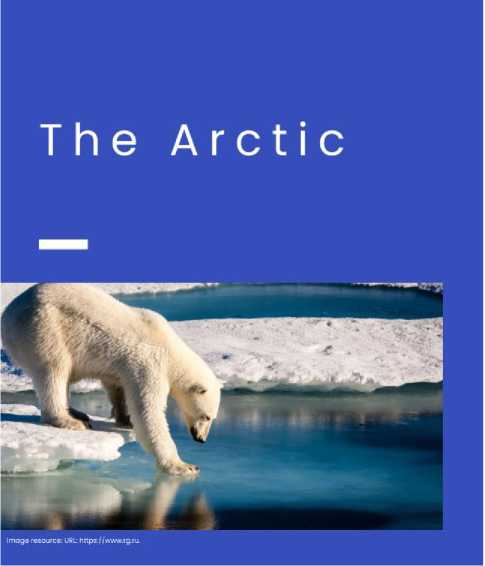
Fig. 9. Russia's strategy for working in the Arctic region.

Permanent investment
U2
Increase of production of oil and gas
The most important actions of Strategy

X4 Increase of investment by 2035. New Arctic research centers organization
X4 Increase of permanent investment by operating companies to support rational use of natural resources
Obviously, anthropogenic stress will increase. Who is a beneficial owner? Locals? Due to new working places creation. Operating companies? Due to their earnings increasing. Ecosystems? Due to rational use of natural resources.
The Arctic Strategy was published on October 26, 2020 16 (hereinafter referred to as the
Strategy) (Fig. 9). The Government of the Russian Federation was instructed to submit an action plan for the implementation of this strategy within 3 months (approximately by the beginning of February). The plan was approved on April 15, 2021, and does not provide that a report on the Strategy implementation will be prepared in 2021. The first report will be published only in 2022, which seems inconsistent, since the plan envisages quite a few specific activities for 2021.
Immediately after the adoption of the Strategy, it received sufficiently high-quality information support. It is planned to cover the progress of its implementation, main achievements, etc. on a special website 17. It seems to be an excellent idea, since a wide range of interested people have access to a platform for discussing current issues of the Strategy along with experts, civil servants and the local population. Any strategy involves setting goals and objectives to achieve them. This approach does not cause discussions and disputes. The question of responsibility for failure to achieve the goals outlined in the Strategy remains open. Who should be responsible for this? What measures of responsibility can be applied to those responsible for the disruption of plans? Can a strategy involving budget expenditures be an effective development tool when it does not contain a mechanism for enforcement or does not offer specific measures of personal (not collective) responsibility?
-
16 For more details, see the text of the Strategy
http://publication.pravo.gov.ru/Document/View/0001202010260033 (accessed 06 July 2021).
-
17 URL: https://www.arctic2035.ru (accessed 06 July 2021).
on
the
URL:
The implementation of the Strategy is expected in two stages and includes many areas for the development of the region, including the rational use of natural resources. The document contains targets to be achieved as a result of its implementation. Among them are the share of investments in science and education (growth by 4 times by 2035) and the share of investments in fixed assets for the rational use of resources (growth by almost 4 times by 2035). At the same time, the production of oil and natural gas in the region is also growing. Thus, the load on ecosystems will grow (mining companies will become the beneficiaries of this approach) [11, Karataeva K.E., pp. 241–242].
The mechanism of responsibility for the implementation of the Strategy is not proposed. Its provisions will be implemented by state and local authorities, state-owned companies and entrepreneurs. The main curator of the document is the President of Russia.
The text of the Strategy for the Development of the Activities of the Russian Federation in the Antarctic up to 2030 (hereinafter referred to as Strategy 2) (Fig. 10), in turn, is not available on the official portal of the Government of the Russian Federation, although it is indicated that on August 21, 2020, the Government of the Russian Federation adopted an order for the approval of such a document 18. This information was duplicated in the reports of a number of mass media 19. Moreover, at the end of February 2021, the official website of the Parlamentskaya Gazeta reported, with reference to representatives of the Ministry of Nature, that the agency had submitted an action plan for the implementation of Strategy 2 to the Government of the Russian
Federation.
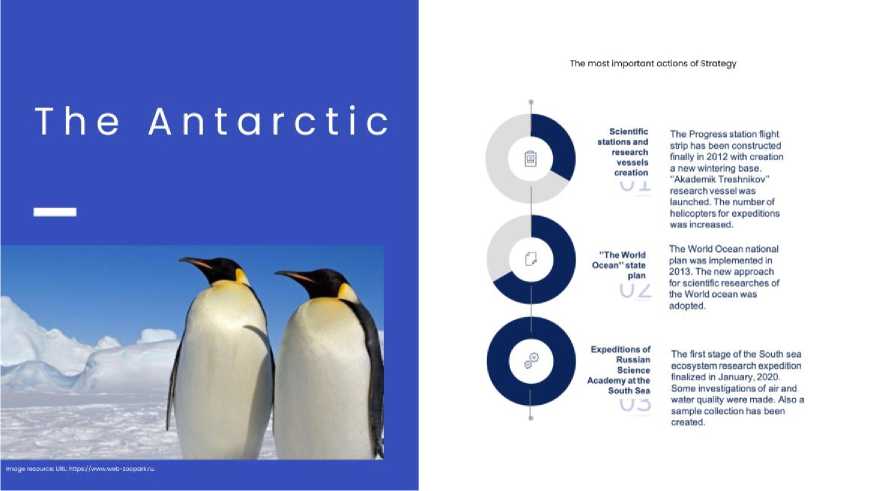
Fig. 10. Russia's strategy for working in the Antarctic region.
Partially about what Russia is going to do in Antarctica in accordance with the adopted Strategy 2 is stated in the communication of the Ministry of Natural Resources dated February 19, 2021. The key areas of work in this region should be environmental protection and development of comprehensive fundamental scientific research.
Thus, currently, Strategy 2 and the action plan for the implementation of its goals are not available for analysis. This approach seems unattractive from the standpoint of the possibility of expert discussion of these documents, of the interests of taxpayers who have the opportunity to know about the spending of budgetary funds, as well as of demonstrating the role of Russia as one of the leading countries in the global environmental movement to preserve marine ecosystems, both in regions with active human economic activity, and in regions where such activity is prohibited by international treaties. Russia's “Arctic” activity can be explained in terms of the possibility of implementing logistics projects here, projects in the field of strategic weapons, projects for the extraction of minerals. Antarctica, given its international status, is the territory of science. We believe that in this respect there is no need to play down the importance of this region for Russia, since the scientific potential of the country, as was seen in 2020, is very important.
Moreover, Russia, more than any other country in the world, is affected by climate change because it has the largest territory. Up-to-date information about the state of the climate on the planet and trends in its change can be used to make strategically important decisions about the present and future of the country. Such decisions are driven by people whose environmental culture influences the quality of such decisions and of the international rules of conduct.
Thus, the question of the quality of the intellectual resource that Russia has for the implementation of a balanced environmental policy in the Arctic is of decisive importance. Taking into account the plans of Russia as a country with the longest Arctic frontier to develop economic activity in the Arctic, as well as to increase its influence in the Antarctic, the issue of training specialists becomes a purely practical matter.
Personnel decide everything, or everything is decided without personnel
This part of the article presents an analysis of Russia's capabilities in terms of its provision with professionals who are able to manage projects in the Arctic and Antarctic not only as consumers of resources, but also as defenders of the ecosystems of the World Ocean (Fig. 11, 12). In other words, Russia needs specialists to implement a balanced state environmental policy in the human-marine ecosystem chain. For evaluation of Russia's plans for training such specialists, let us turn to Strategy and Strategy 2.
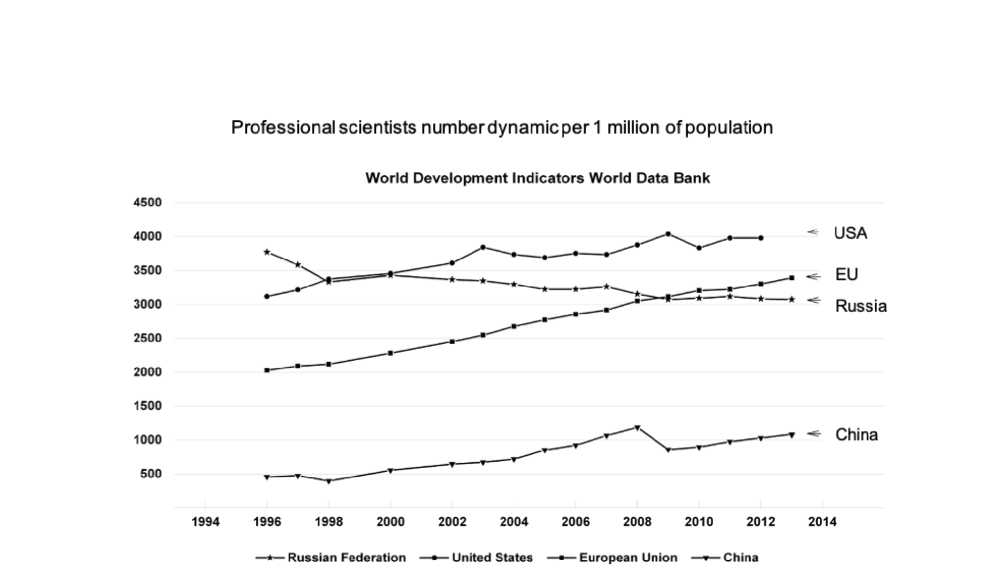
Fig. 11. Dynamics of the number of professional researchers per 1 million people by country 20.
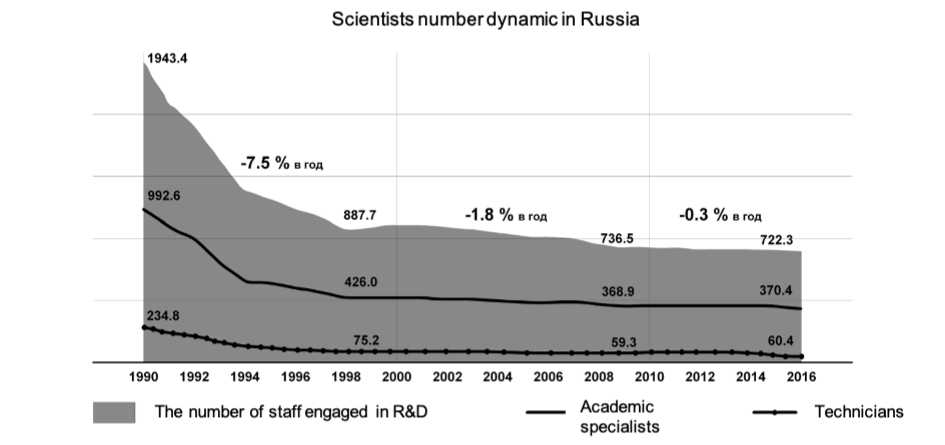
Fig. 12. Dynamics of the number of personnel engaged in research and development in Russia 21.
The Action Plan to Implement the Strategy (hereinafter referred to as the Plan) includes a number of provisions that are directly related to the support and development of the existing, as well as the formation of a new intellectual resource for the Arctic 22 (Fig. 13).
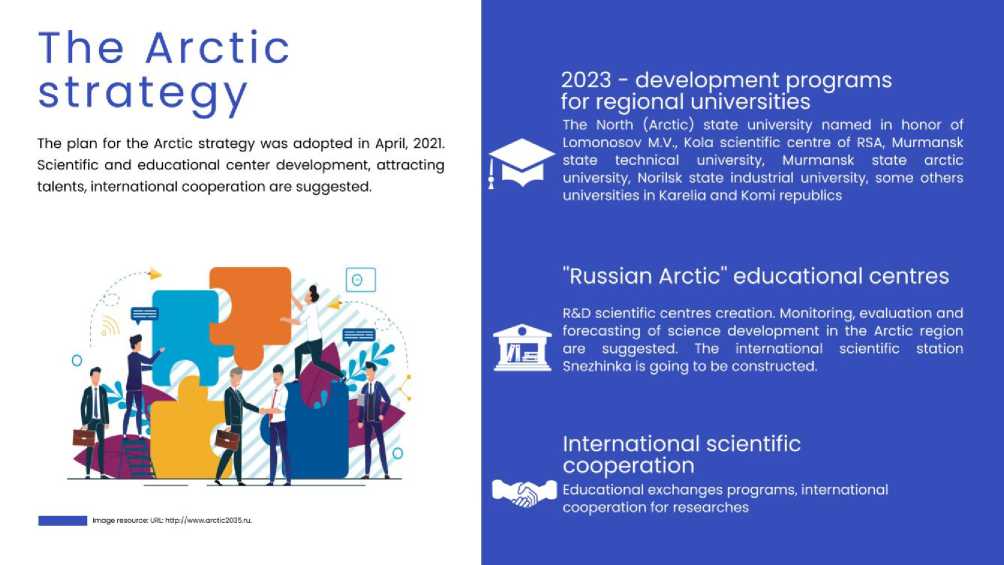
The Arctic strategy
^J Image resource: URL
The plan for the Arctic strategy was adopted in April, 2021. Scientific and educational center development, attracting talents, international cooperation are suggested.
Russian Arctic" educational centres
International scientific cooperation
ВЦ®#! Educational exchanges programs, international cooperation for researches
2023 - development programs for regional universities
The North (Arctic) state university named in honor of Lomonosov M.V., Kola scientific centre of RSA, Murmansk state technical university, Murmansk state arctic j university, Norilsk state industrial university, some others universities in Karelia and Komi republics
Fig. 13. Russia's Arctic strategy: training activities and scientific cooperation.
For example, section 1 of the Action Plan, dedicated to solving the social problems of this region, assumes that by 2023 (three years after the adoption of the Strategy during a decade of active actions), development programmes will be prepared for several regional higher education institutions, research centres (the Northern (Arctic) Federal University named after M.V. Lomonosov, Kola Scientific Center of the Russian Academy of Sciences, Murmansk State Technical University, Murmansk Arctic State University, Norilsk State Industrial University, a number of educational and scientific organizations in the Republic of Karelia and the Republic of Komi). Unfortunately, it is impossible to conclude how useful such plans will be, whether they will concern only the development of the material and technical base of the centers or will also be focused on expanding the range of specialists and scientific disciplines for the formation of the previously mentioned balanced environmental management.
Other sections of the Plan also imply actions to develop (create conditions for development) an intellectual resource. Thus, one can pay attention to paragraphs 110–112, which envisage implementing the programme of activities of educational centres "Russian Arctic: new materials, technologies and research methods", the development of scientific and educational centers in the areas of fundamental research conducted in the interests of the Arctic development, monitoring, assessment and forecasting of science and technology development in the Arctic zone, as well as the creation of two international Arctic stations “Snezhinka”. Paragraph 141 of the Plan promises the development and implementation of an international educational exchange programme for the younger generation. Paragraph 146 of the Plan proposes the development and implementation of a scheme for international Arctic scientific cooperation.
Thus, the presented parameters of the Plan look encouraging and inspire confidence that the work of training highly qualified personnel for work in the Arctic, not only in the field of exploration, development and extraction of minerals, will be one of the priorities of state environmental policy. At the same time, all programs and plans proposed for development should be available for analysis by the current generation of highly qualified specialists who declare the need to find the very balanced approach to using the resources of the World Ocean ecosystems. Is this possible for the Strategy? Probably, yes, since a special portal on the Internet allows posting up-to-date information on the progress of the Strategy implementation, which can be available for wide public discussion and discussion among professionals.
Analysis of Russia's prospects in terms of building up its intellectual potential in the field of Antarctic research is currently difficult (Fig. 14).
The Antarctic strategy
The plan for the Antarctic strategy was adopted in February, 2021. Environment protection, fundamental scientisic researches are suggested. There was no information about Antarctic staff issues.
Science
Nature
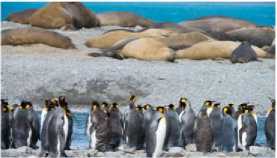
Image resource: URt
It is a correct line of effort, but not a revolutionary one because of the Antarctic environment protection Protocol.
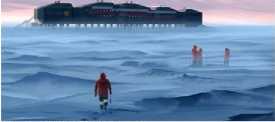
Image resource: URL:
It is an evident line of effort because a scientific activity is just one nowadays which is permitted in the Antarctic region.
Staff?
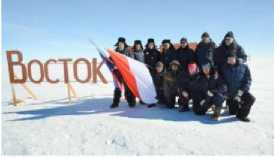
Image resource: URL
It is not so clear, how the Antarctic staff issue will be met
Fig. 14. Russia's strategy in Antarctica: plans for nature protection, scientific activities and training.
In the media over the past two years, there are a lot of publications about who and how prepares specialists for work in the Arctic, what specialties are in most demand, etc 23. Among the educational institutions, there are those mentioned in the text of the Strategy (universities in Murmansk and Arkhangelsk, for example). However, the relevant request for specialists for Antarctica presents only the Arctic and Antarctic Research Institute in St. Petersburg. However, the research institute is still not a university, but an organization that is ready to hire specialized specialists with a diploma. Thus, Russia's strategic approach to training personnel for work in the
Antarctic region for the next 10 years is incomprehensible to a wide range of experts and specialists.
Conclusion
Proposals. Preservation and development of marine ecosystems beyond the Arctic Circle is possible through the use of effective universal international and national mechanisms provided with intellectual resources. Both components of a successful recipe for the struggle for the future of the Arctic and Antarctic depend on each other, since the development of these mechanisms is possible only by highly qualified specialists in their field, and the institutional framework for the protection of marine ecosystems should a priori provide for scenarios for continuous education of new and advanced training of existing professionals in the field of polar environmental policy.
The preparation of a personnel reserve for the Arctic and Antarctic could make a tectonic shift in the public perception of the role of man in terms of its negative impact on the environment, as highly qualified specialists in the field of balanced (sustainable) project management in the Arctic and Antarctic, on the one hand, will moderate the ardor of “greedy businessmen” and point them to the need for a discreet approach to the depletion of regional ecosystems, and on the other hand, activate local communities (in the Arctic case) and representatives of the countries that own the Antarctic infrastructure and international organizations (in the Antarctica case) in the conservation of marine biological diversity and protecting the human environment from degradation.
Список литературы Conservation and Evolution of Marine and Coastal Ecosystems: Polar Factor
- Kennicutt M., Bromwich D., Liggett D. et al. Sustained Antarctic Research: A 21st Century Imperative. One Earth, 2019, no. 1 (1), pp. 95 113. DOI: 10.1016/j.oneear.2019.08.014
- Khrapov P.V., Kaniber V.V. Sravnitel'nyy analiz klimaticheskikh izmeneniy v Antarktike i Arktike [Com-parative Analysis of Climate Change in the Antarctic and Arctic]. International Journal of Open In-formation Technologies, 2019, vol. 7, no. 8, pp. 32 43.
- Zukhba D.T. Arktika i Antarktika v politike global'noy bezopasnosti [Arctic and Antarctic in Global Se-curity Policy]. Russkaya politologiya [Russian Political Science], 2018, no. 3 (8), pp. 71 76.
- Lipinа S.A., Smirnovа O.O., Kudryashovа E.V. Arktika: strategiya razvitiya: monografiya [Arctic: De-velopment Strategy]. Arkhangelsk, SAFU Publ., 2019, 338 p. (In Russ.)
- Balobanov A.E. Razvitie Arktiki vyzov upravleniyu territorial'nym razvitiem [Arctic Development A Challenge for Territorial Development Governance]. Arktika 2035: aktual'nye voprosy, problemy, resheniya [Arctic 2035: Pressing Issues, Problems, Solutions], 2020, no. 2, pp. 4 11.
- Degai T.S., Petrov A.N. Rethinking Arctic Sustainable Development Agenda Through Indigenizing UN Sustainable Development Goals. International Journal of Sustainable Development & World Ecology, 2021, vol. 28, no. 6, pp. 518 523.
- Claudet J., Bopp L., Cheung W. et al. A Roadmap for Using the UN Decade of Ocean Science for Sus-tainable Development in Support of Science, Policy, and Action. One Earth, 2020, no. 2 (1), pp. 34 42. DOI: 10.1016/j.oneear.2019.10.012
- Koltakova A., Pankova V. Nekotorye voprosy pravovogo regulirovaniya okruzhayushchey sredy Arktiki i Antarktiki [Some Issues Regarding Legal Regulation of Environment of Arctic and Antarctic]. Okeanskiy menedzhment [Ocean Management], 2018, no. 2 (3), pp. 30 33.
- Chown S.L., Brooks C.M., Terauds A. et al. Antarctica and the Strategic Plan for Biodiversity. PLoS Bi-ology, 2017, no. 15 (3), pp. 1 10. DOI: 10.1371/journal.pbio.2001656
- Timokhin K.V. Dogovor ob Antarktike i evolyutsiya ego institutsional'nykh mekhanizmov [The Antarc-tic Treaty and the Evolution of Its Institutional Mechanisms]. Moskovskiy zhurnal mezhdunarodnogo prava [Moscow Journal of International Law], 2019, no. 4, pp. 104 113.
- Karataeva C.Y. Arktika i Antarktika: novye mirovye vyzovy [The Arctic and Antarctic: New Global Chal-lenges]. Problemy natsional'noy strategii [National Strategy Issues], 2015, no. 4 (31), pp. 241 244.

